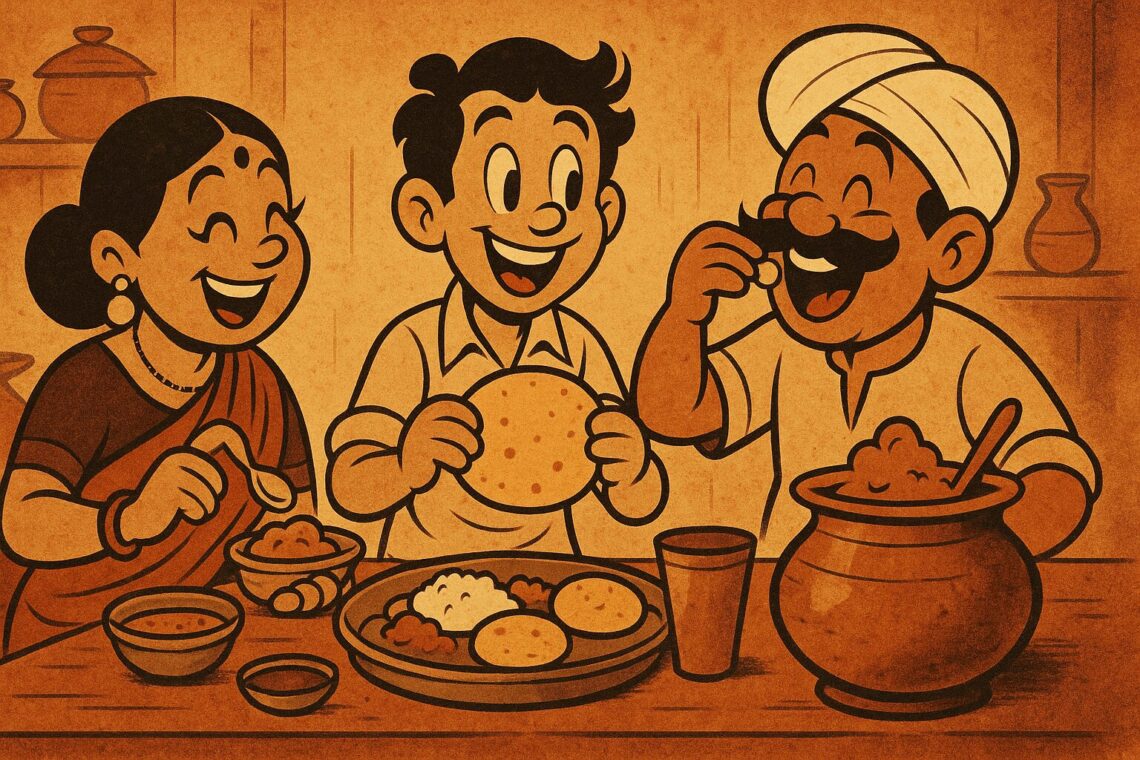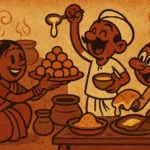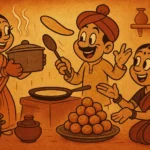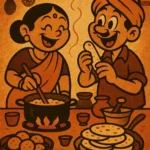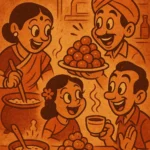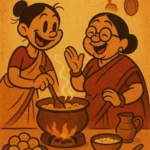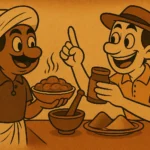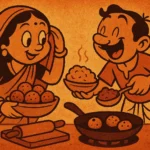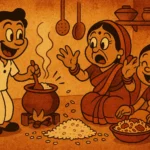Growing up in Mumbai, I didn’t have to think twice about food. It was always there — fresh, hot, and full of the rich, comforting spices that defined my childhood. My mom’s roti-making skills were legendary. She would knead the dough in rhythmic motions, her hands flying effortlessly across the kitchen, until perfect, golden-brown rotis would appear one after the other. But then came the move to Austin, Texas, and with it, the sudden, strange reality of convenience foods that were so far removed from the home-cooked meals of my childhood.
My first brush with the world of microwaved roti and frozen parathas was a bit of a culture shock. Suddenly, the kitchen didn’t smell like fresh wheat dough and sizzling ghee. Instead, it was the faintly plastic scent of a frozen paratha that lingered in the air, ready to be “cooked” in the microwave or on a hot griddle. At first, I was horrified. How could a frozen, pre-made paratha possibly compare to the soft, flaky layers of the ones my mom would make at home? But over time, I realized something. As convenient as these foods were, they were still very much a part of my cultural identity — albeit a different, more accessible version. And, somehow, they began to hold their own place in my memory, just as the lovingly hand-rolled rotis of my childhood once did.
The Roti Dilemma
Let me take you back to one of those typical mornings in my childhood. I’d wake up to the sound of my mom in the kitchen, her presence so palpable that even the smell of freshly cooked food would feel like an extension of her warmth. The rotis were always made fresh, never from a packet, and there was no need for a microwave. The ritual was simple but sacred: the dough would be kneaded with love, rolled out by hand, and tossed onto the hot tawa with a soft, satisfying *sizzle*. It was nothing short of magic, and to this day, the taste of those homemade rotis fills me with nostalgia. Each bite felt like home.
Fast forward to my life in Austin, where space is limited and time is a luxury. My first attempt at making rotis on my own was nothing short of tragic. The dough was either too hard or too soft, and the rotis ranged from leathery to barely cooked in the middle. The dream of perfectly puffed rotis seemed more like a faraway memory. That’s when I stumbled upon the frozen roti aisle at the local Indian grocery store. I’d never even considered the idea of frozen, pre-cooked roti until then. But when I popped one into the microwave, it wasn’t the disaster I had feared. Sure, it wasn’t quite the same as my mom’s, but it was edible, and more importantly, it was *quick*.
That’s the thing about convenience foods: they don’t try to replace the nostalgic, hand-crafted meals from home. They simply offer a shortcut. And sometimes, that’s all you need when you’re juggling a career, social life, and the general chaos that comes with living in a new country. But even as I reached for frozen rotis, a part of me couldn’t help but long for the comfort of the homemade variety. I began to realize that these microwaved versions, while practical, carried their own weight in the story of my cultural adaptation. They were a reminder that I was, after all, holding on to the essence of something that would always be a part of me.
The Paratha Revelation
Then came the frozen parathas. Oh, how they made their mark in my kitchen. Growing up, parathas were something special — a treat for weekends or special occasions, not an everyday item. They were packed with fillings: potato, paneer, or cauliflower, and were always served fresh, warm, and crispy. My mom would take hours to prepare the filling, rolling it just right so that each bite was bursting with flavor. But the frozen parathas? Well, they weren’t anything like that. I didn’t even have to knead the dough. I just took them out of the packet, tossed them onto the hot griddle, and *voila* — breakfast was served in five minutes.
Initially, I was unsure if I could even call them “parathas.” There was a tiny bit of guilt, too — as if I was betraying some unwritten culinary rule that only homemade parathas could truly be worthy of the name. But after a few trials, something happened. The convenience of these frozen, ready-to-cook parathas began to feel like a little piece of home in a country that wasn’t always so familiar. They were quick, they were tasty, and they allowed me to recreate the feeling of home without the long hours in the kitchen. That’s when I understood: food isn’t just about the ingredients or the technique. It’s about the memories it brings and the way it fits into the rhythm of your life.
The Taste of Growing Up Desi in the West
What I came to realize, after a lot of microwaved rotis and frozen parathas, is that convenience foods didn’t dilute my cultural memory — they reshaped it. Growing up desi in the West means finding ways to hold on to your heritage while adapting to the reality of a fast-paced, often disconnected world. Convenience foods are a bridge, helping us connect the dots between the home-cooked meals of our childhood and the modern-day demands of our lives. They offer us a way to stay connected to our culture, even as we adapt to new surroundings.
For second-generation kids like me, foods like frozen parathas or microwaved rotis are more than just quick meals. They are reminders of the balance we try to strike between preserving our cultural roots and embracing new, often faster, ways of living. They help us navigate the complexities of being desi in the West — where everything from our food to our family dynamics is a blend of the old and the new. And every time I microwave that roti or heat up a frozen paratha, I’m reminded that, while it might not be as perfect as my mom’s, it still carries a little bit of that warmth and love that defines home.
In the End, It’s All About Balance
So, do I still make fresh, hand-rolled rotis from scratch? Yes, sometimes. But the frozen ones? They’re here to stay. They remind me that convenience isn’t the enemy of culture; it’s a part of the evolving story. Growing up desi in the West means learning to navigate the tension between the traditional and the modern, and sometimes, that means accepting the microwaved version of what was once made by hand. And that’s okay. After all, food is about the memories it creates, not just the way it’s made.
Born in Mumbai, now stir-frying feelings in Texas. Writes about food, memory, and the messy magic in between — mostly to stay hungry, sometimes just to stay sane.

